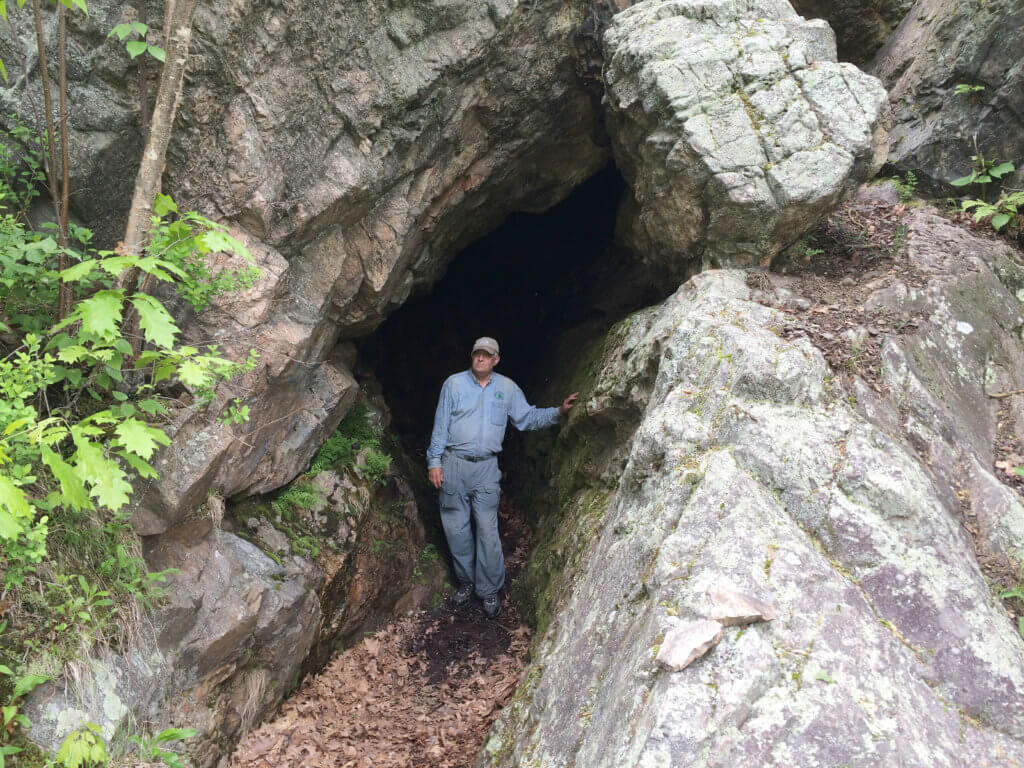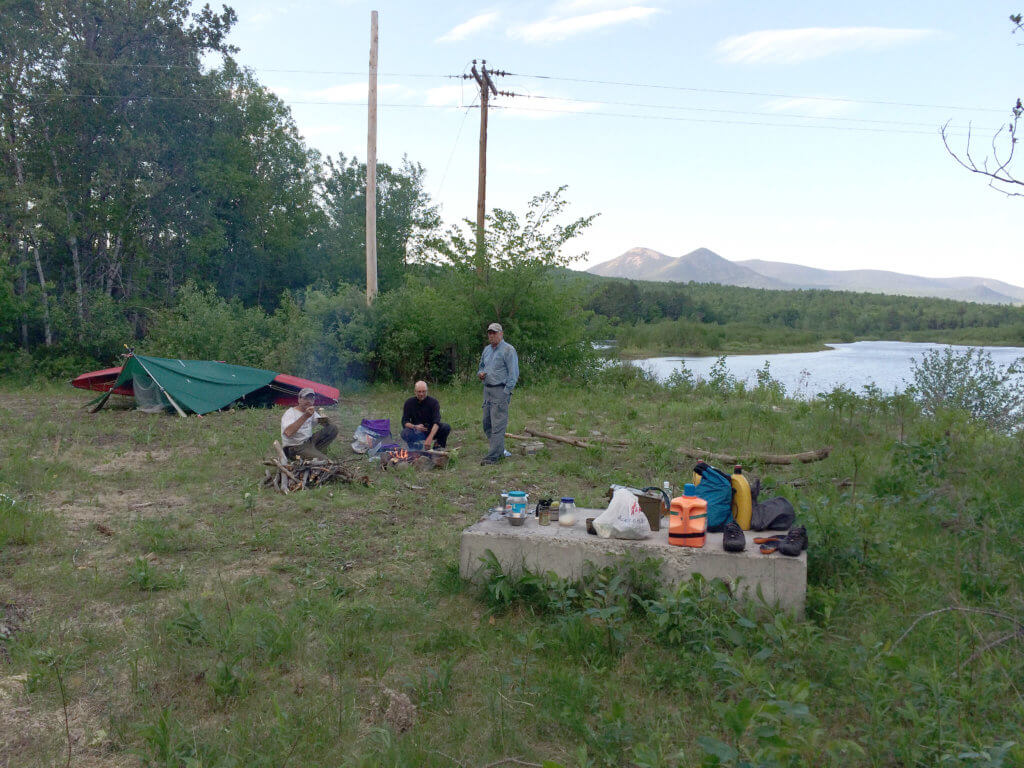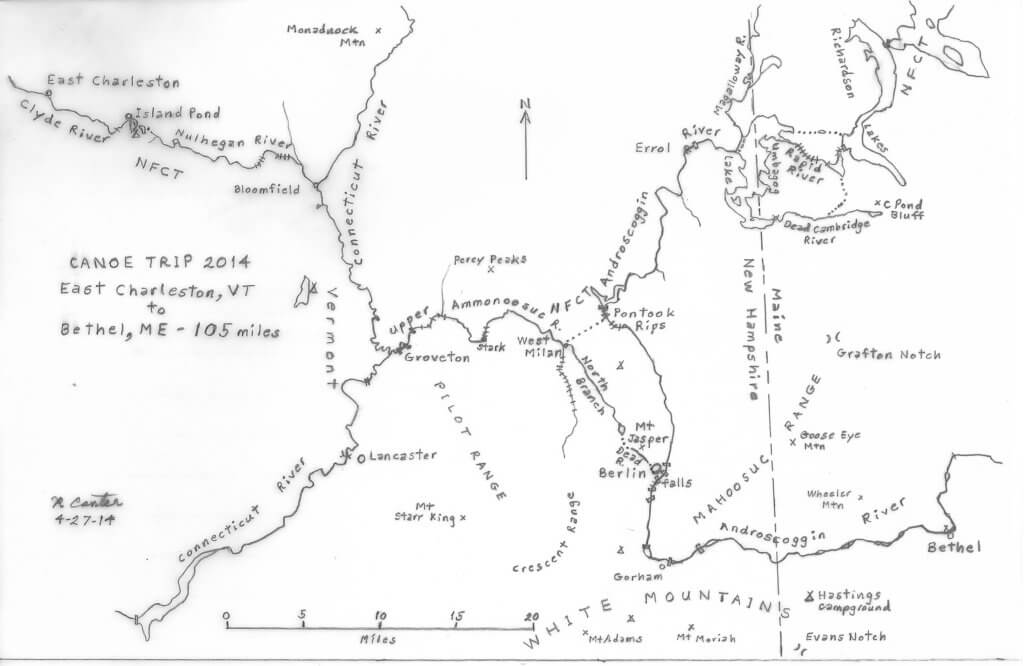In January 2020, we caught up with Ron Canter. Ron and his comrades at Native Trails, Mike Krepner and Randy Madres are credited with bringing the original idea of the Northern Forest Canoe Trail to organizational founders Kay Henry and Rob Center in the mid 90s. As we begin a year of reflection on our first 20 years, and knowing that the concept came to the trio through many years of research and adventures, we wanted to hear about his experiences paddling and adventuring across the Northern Forest both before and after the founding of the NFCT.
Chris Morris: Thanks for catching up with us, Ron. For those of us who don’t know you, like me, tell us a little bit about your background — professionally and personally.
My background is in cartography. Most of my career with the federal government was making airport landing charts, for both the National Oceanic and Atmospheric Administration and the Federal Aviation Administration. It’s my background and my hobby.
Ever since the Boy Scouts, and later the Terrapin Trail Club in college, I’ve been very active outdoors, first rock climbing, then canoeing, and in the winter caving — caves are relatively warm in the winter. I’ve done a lot of the rivers in the DC area; now I live in Leonardtown in southern Maryland.
Chris: How did you get hooked on adventure paddling?
Years and years ago, I read a book by Eric Morse, about voyagers and voyager canoe routes. That inspired myself and another local guy to try a local route across the Potomac. It was too hard — too much portaging and very impractical. But, we had a really good time.
After that, I persuaded a friend of mine to do a trip across Vermont, along what is now, at least partly, the NFCT. We went up Nulhegan, down the Clyde, then up the Black and down the Lamoille.
That trip went great, so we tried an Adirondack trip. Again, it was awfully hard, and two of the people quit half way through — that’s another story for another day.

Overall, my friends and I found out the hard way how much portaging was too much. But I found that I really loved the Northern Forest region. I did a lot of trips in Maine and the Adirondacks that were more practical and more fun.
Some time after all of that, another friend, Mike Krepner, was looking at canoe trails. He was exploring how to make longer voyages, so he and I and some others established an organization called Native Trails in 1989. We had a simple little goal of researching, recording, and when possible preserving all old canoe routes, everywhere. Naturally, we couldn’t do it all. So instead, we focused on a couple of projects to get started. Eventually, we tackled the NFCT. We decided to do three events: the south end, the north end, and the middle. I got the middle at Island Pond in Vermont. The events were modest successes. Two decades later, here we are.
Chris: What is it about the NFCT that makes it so special to you?
For starters, strangely enough, I haven’t done the thru-paddle — I’ve done most of it. First of all, it’s a great adventure. You start at Old Forge, you go 740 miles, and a month or more later you’re at Fort Kent at the Canadian Border. You’ve been through all of the major wilderness — the Adirondacks, the Northeast Kingdom, all through Maine forest lands. It’s a way to put them altogether, and over and above that, most of it really is ancient — you’re paddling the same routes and portages that Native Americans have for centuries. It’s like being in a time machine — it’s just great, it puts it altogether.

It’s a real challenge — much more so than most canoe trails. You go upstream and downstream, portage, paddle — you’ve got to use everything in your toolkit as a paddler. It’s tough. But it’s worth it, to me anyway.
Chris: Tell me more about the inspiration for the work you did on these paddling routes in northern Maine.
Several years ago, someone brought up the topic of, “What do you do over and beyond the trail itself?”
The NFCT was always meant to be part of the backbone of larger systems — it links up all of these other waterways. Northern Maine had, in its heyday in the 19th century, canoe routes that went almost everywhere. As someone interested in history, I started researching them to see what you could still do to complement NFCT. I had to limit it somewhat, so I went with northern Maine.
The basic foundation is David Cook’s book, Above the Gravel Bar: The Native Canoe Routes of Maine. He laid out a lot of the major and many of the minor routes. I set about to update it — see what’s doable now, and what isn’t.

A few years ago, Russ Ford and Charon Fegard followed a route from Grand Lake Matagamon over to the Aroostook River — this is a route that some friends and I had followed some 20 years before, in the other direction. At that time, Beaver Brook had four places you had to wade through. Otherwise the rest was all pretty straightforward. Now it’s all jammed up — it made me realize that just because something was doable 40 years ago, it doesn’t mean it’s doable now. I started collecting information — Google Earth is a HUGE resource that didn’t exist then. It can’t do everything, but it does provide a lot of answers — are the woods a mess, are logging roads still there.
So this piece [more information below] is mostly a research exercise — I’ve done a few parts, but a lot of it I haven’t.
Chris: In general, what’s something you want people to know about the NFCT?
It’s not meant just for the harcore thru-tripper. Segments of it are really amazing in their own right. I want people to know about these areas that people aren’t necessarily aware of — local paddlers, local businesses, local organizations.
Also, the landowners along the canoe trail have always been great. Most are quite reasonable as long as people are respectful. A lot of the trail is handshake agreements — it’s in everyone’s interest to hold to an agreement, whether written or not. If it’s no longer in their interest, people will try to get out of it even if it’s in writing. It’s all worked pretty well so far — but you can’t do that without involving people and communities along the trail. It benefits them, though we can’t oversell it — it’s not going to make every place an outdoor mecca since we’re only talking a moderate number of paddlers. But it does give you a leg up in terms of advertising recreational opportunities.
Ron also shared with us an incredible overview and guide of off-the-beaten path trips in Maine called “The Allagash and its Neighbors.” NFCT would love to share these trips with you, but we ask that you reach out to us personally; these are not for those who require detailed guidebooks, and are definitely reserved for the more adventurous paddler. To learn more, contact Karrie Thomas: karrie@northernforestcanoetrail.org.